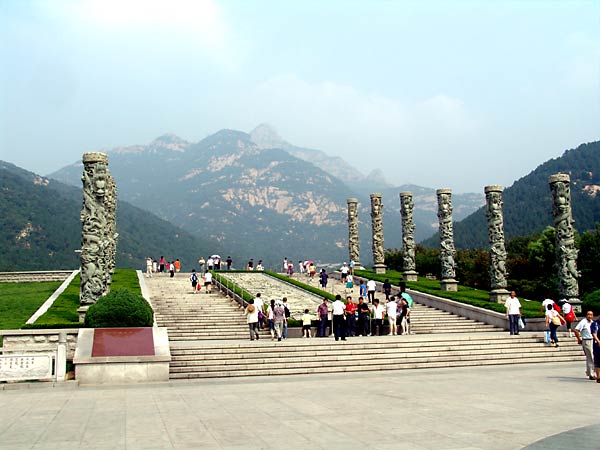
Mt. Tai and Qufu
Our hosts at the institute arranged some sightseeing for us for the weekend; we are to go to Mt. Tai and Qufu. Bob and Linda went there earlier as part of their tour before teaching in Jinan, so Sylvia, Vern, Nancy, and I went, while Linda and Bob did some other things in Jinan. Mt. Tai is considered number one among holy mountain sites in China. Many emperors came to Mt. Tai (pronounced "tie") to pray. Mt. Tai is about 80 to 100 km south of Jinan and Qufu (pronounced "chew-foo"), the hometown of Confucius, is another 60 - 80 km further south. To do both in one weekend required staying overnight in the area, so the institute arranged lodging for us at Confucius Normal University in Qufu.

The entrance to the Mt. Tai scenic area. Mt. Tai is the highest
peak seen in the distance. From here we went by bus; private autos cannot drive
into the scenic area.
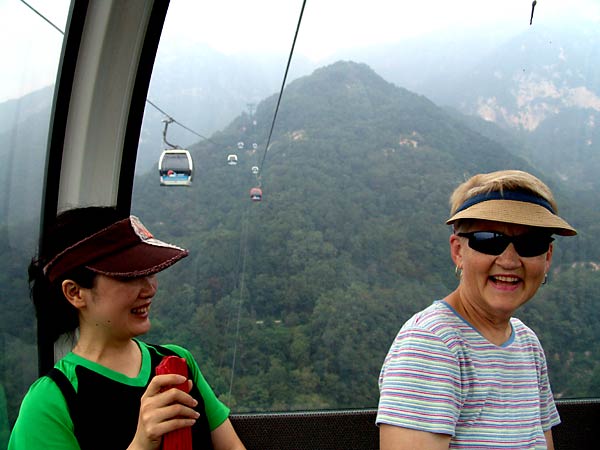
The bus ride ended about half way up the mountain. At that point
we switched to a cable car which took us almost all the way to the top. Mt. Tai
is 1545 (5068 feet) above sea level.
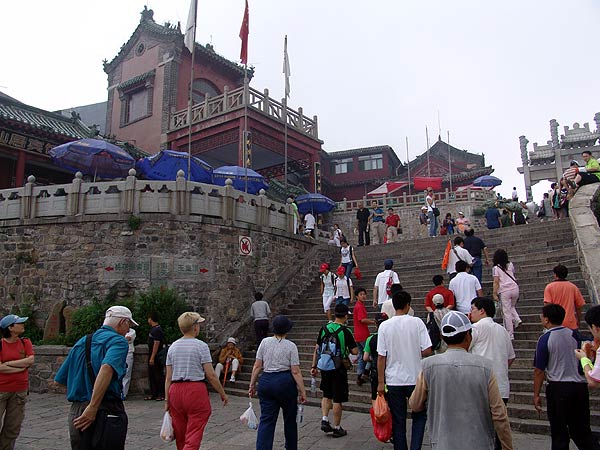
As we walked the rest of the way to the top we passed by several
temples and many shops selling food and souvenirs. From the crowds there, it is
clear that the area is very popular with the Chinese people. The area is not on
the normal tour routes so we didn't see any other westerners there.
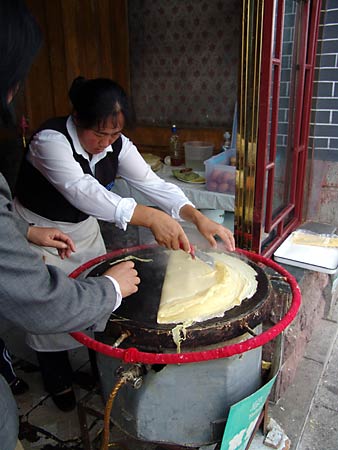
This woman is making a form of bread much like a Mexican
tortilla, but much larger.
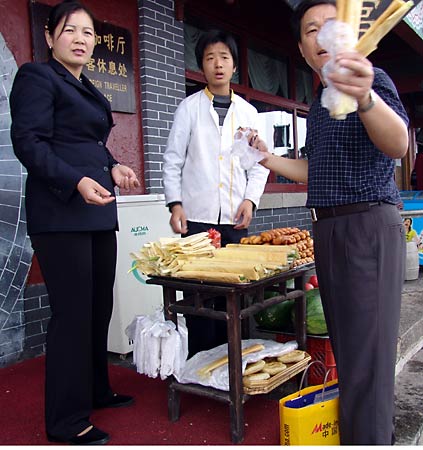
The "bread" is then rolled up with onions and a sauce (probably
plum) inside to make something similar to a Mexican taco. It was very tasty.
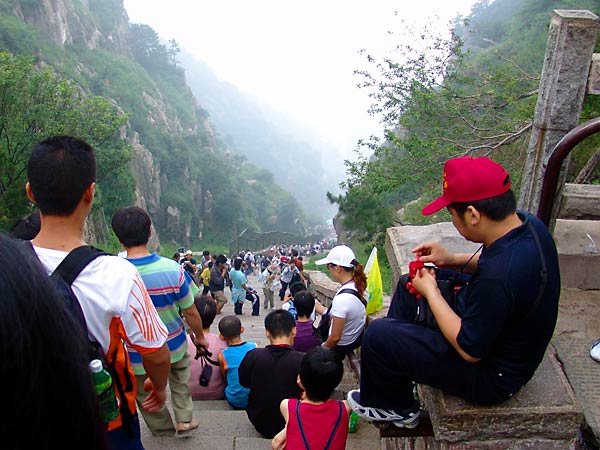
Instead of using the cable car, many Chinese walk up the
mountain. It is about a 4 hour hike and looked very steep from this vantage
point.
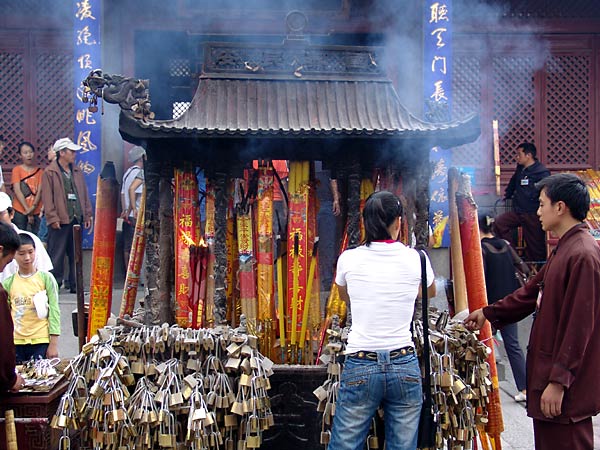
Burning incense in one of the temples. It appears that many
Chinese come here to burn incense and to pray.
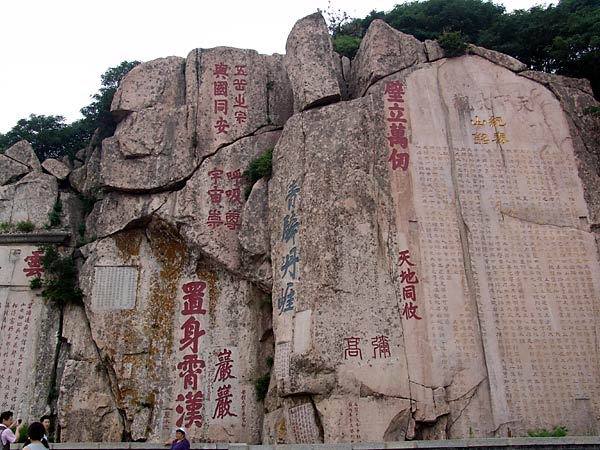
Along the way to the top we passed by these Chinese writings,
which are about 1700 years old.
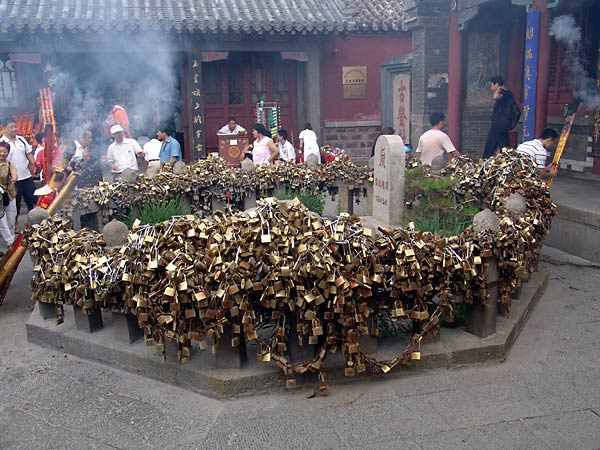
We found this ring of padlocks in another temple on our way to
the top. The padlock is used in a form of prayer and is meant to help make the prayer
come true.
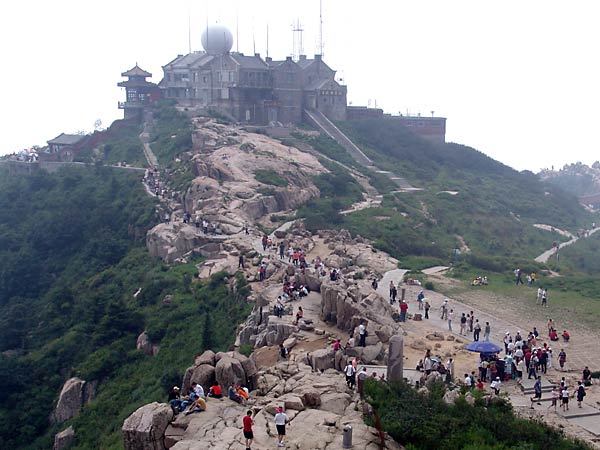
A popular activity with the Chinese is to hike to this hotel
near the top, spend the night here, and get up early the next day to see the sunrise. Later we learned that one of our students in Jinan had come here that day
and stayed the night, hoping to see the sunrise. She said that she had seen the
sunrise, but only in her dreams; it was raining the next morning.
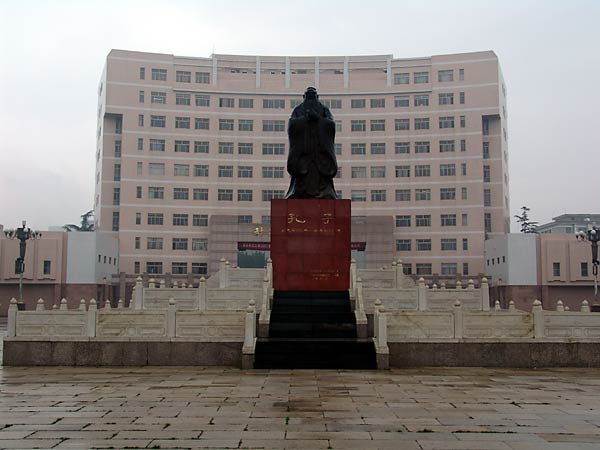
After coming down the mountain we drove to Qufu and stayed at
Confucius Normal University. We were greeted the next morning by this statue of
Confucius in front of the main administration building.
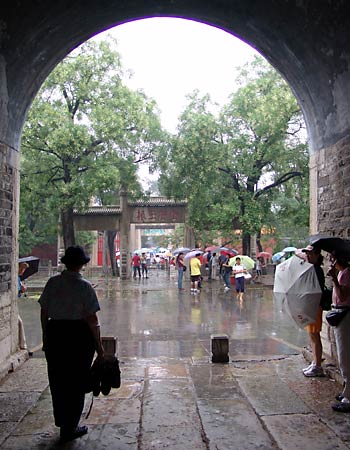
This is the entrance to the Confucius Temple. Confucius lived
from 551 BCE to 479 BCE. By the age of 30 he was a famous teacher, serving as a
teacher to the emperor and attracting many students. During his life he had a
total of 3,000 students. The temple was built here, at the site of his home, by
various emperors to honor him. You might say that we are entering the first
university.
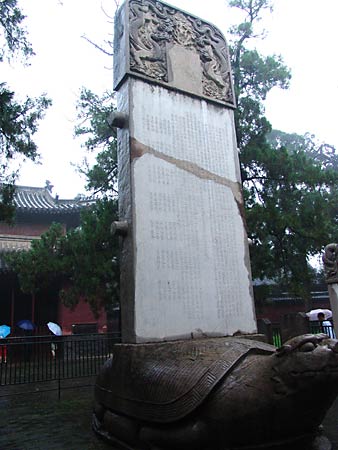
We were told that, during the cultural revolution, the Red Guard
came into the temple, knocked stone tablets over, and attempted to destroy them.
After the cultural revolution was over, as many of the tablets were repaired as
possible. You can see where this tablet was put back together.
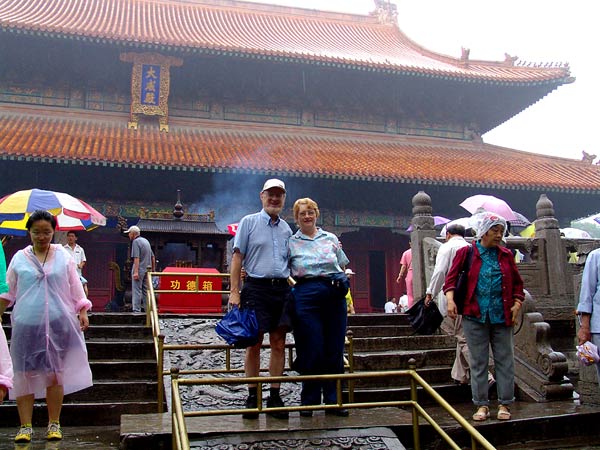
We are standing in front of the main part of the temple; incense
is burning behind us. Taking photos (like this) of friends and family members in
front of famous scenes is very popular in China. Sometimes, it is hard to get
pictures without people standing in the way posing for someone in their group.
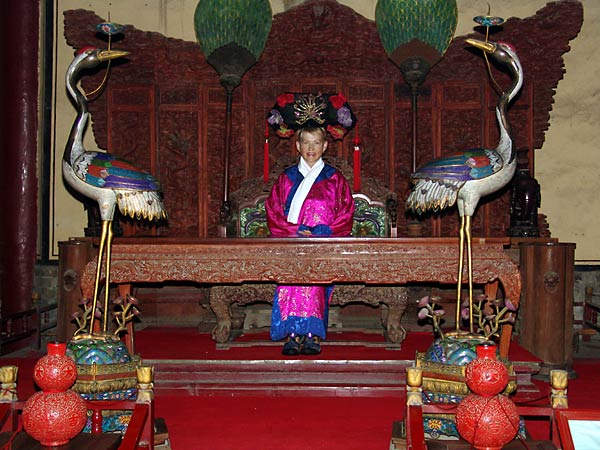
The next stop that day was the Confucius mansion. Confucius may
have lived a simple life, but his descendants lived rather well. For a few
bucks, you could dress up like an emperor or empress and have your photo
taken. It seems that Sylvia has let the role of team leader go to her head (:-).
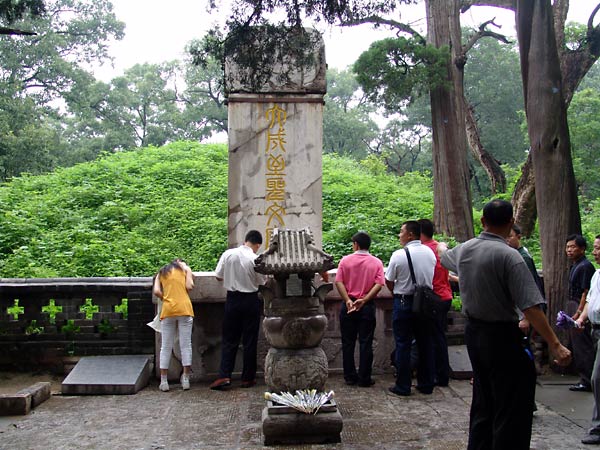
Our last stop for the day was the Confucius family cemetery where Confucius and his descendents are buried. This is Confucius' grave. I find it interesting that the Chinese know exactly when and where Confucius was born, lived, and died, while our biblical scholars know relatively little about these details concerning Jesus.